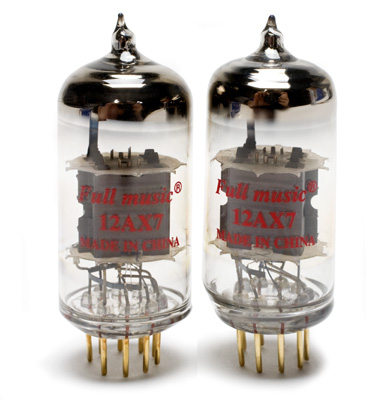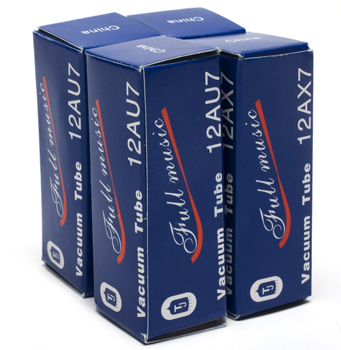 You could save up what it would cost to buy yourself a Porsche Cayman S or a two-week holiday in the Bahamas, and still not be able to afford a set of Wilson Benesch’s top-of-the-range Cardinal speakers. So when the British manufacturer offered its Full Circle turntable up for review, I was initially wondering just how many circles would be on the price tag—surprisingly, not many. In fact, the Full Circle (complete with the company’s A.C.T. 0.5 tonearm and Ply MC cartridge) turned out to be a relatively low-cost, high-value bundle. It’s priced at about $4,400 (£2,795).
You could save up what it would cost to buy yourself a Porsche Cayman S or a two-week holiday in the Bahamas, and still not be able to afford a set of Wilson Benesch’s top-of-the-range Cardinal speakers. So when the British manufacturer offered its Full Circle turntable up for review, I was initially wondering just how many circles would be on the price tag—surprisingly, not many. In fact, the Full Circle (complete with the company’s A.C.T. 0.5 tonearm and Ply MC cartridge) turned out to be a relatively low-cost, high-value bundle. It’s priced at about $4,400 (£2,795).
And, while some decks look like they are all elbows and sharp angles, the Full Circle is all curves—so much so that I half expected it to launch into a chorus of “Happy Birthday, Mr. President” once I got it out of the packaging and put it together. The assembly took about 30 minutes.
The Full Circle follows a lineage chock-full of careful research. The deck is a direct descendent of the company’s first turntable effort, which it released in 1990 as the first deck to feature carbon-composite structures and which Wilson Benesch soon followed with the world’s first hyperbolic curved tonearm. To create the current iteration of the table, the company upgraded the motor and dropped the sprung suspension, which it replaced with a combination of compliant rubber and carbon-fiber cantilevers.
In terms of the chassis design, the Full Circle “is constructed of two component parts,” says Craig Milnes, Wilson Benesch’s Design Director. “The lower part has the motor attached to it. The upper part is where the vinyl is transcribed and so it has to be isolated from the vibrations of the motor. The task was to link the two systems but isolate them at the same time. Between the top sandwich and the bottom sandwich, you have rubber compliant feet that deal with the load frequency coming from the motor.”
A secondary system, says Milnes, tackles the high frequencies, utilizing thin carbon-fiber rods that sit between three aluminum pillars, which are on top of the second sandwich. A stainless-steel sub-platter features a phosphor-bronze bearing and also serves as the host for the belt. A piece of felt lies on top of the acrylic platter.
The 0.5 tonearm sits on a carbon-infused steel rod and utilizes an intriguing kinematic bearing system, which is formed by three captive ball bearings, with a fourth bearing dropped into the center to locate the arm. This system, says Milnes, is superior to a normal ball-race system, because it removes the stiction problems that require a force to change the bearing’s state from stop to go, and also eliminates the unipivot design, which can suffer from excess wear around the bearing tip. “Even if the kinematic balls wear,” says Milnes, “the rate of change will be the same on every one of the balls and will have no effect on the center of the point of movement.”
But perhaps the most integral feature of the tonearm is its carbon-fiber tube. While carbon fiber is a popular design material, it is often poorly implemented, according to Milnes. “Off-the-shelf carbon rods might be stiff, but they’re not damped,” he says. “To do it correctly, it has to be optimized.” For the 0.5, doing it correctly entailed creating a one-off tool that enabled the company to produce an arm with a homogeneous, integrated headshell and enhanced dampening by allowing the carbon fiber to flow in a twin-walled, overlapping, double-helix pattern. “Everything about the tonearm is unique,” says Milnes. “We went out on a limb to prove that the result was possible. The headshell has to have different characteristics than the arm. It requires super stiffness and super damping, but you also want it to flow naturally into the tube so that the energy that flows from the headshell goes into the rest of the tonearm, where it can be absorbed and damped. This is the stiffest tonearm in the world and it’s the most highly damped tonearm in the world.”
The final part of the Full Circle package is the Ply cartridge, which utilizes a generator from Benz Glider. Wilson Benesch then adds its own carbon-fiber body.
There are two reasons to buy a Full Circle: to invest in a new midrange system, or to take the first step in a hi-fi upgrade. For the latter, I wanted to find out exactly what a Full Circle offers, so I hooked up a Rega RP3 turntable, Rega Brio-R integrated amp and Spendor S3/5R2 speakers with Tellurium Q Blue speaker cables.
Mounting the Full Circle on its pedestal stand (about $770), I played “Tribal Statistics,” from Manfred Mann’s Earth Band 1983 album Somewhere in Afrika. Attempting to replicate a bare-bones upgrade, I temporarily shunned a phono amp and plugged the Full Circle directly into the Brio-R’s phono section. I immediately detect a dramatic reduction in distortion, an increase in clarity and an ordered, structured soundstage, while each instrumentalist now has space to maneuver. The music flows, rather than sounding squeezed out of the speakers. The bass is not necessarily weightier, but it is full of character and integrated within the mix, while synths have a textural, informative presentation. The vocals prove to be nuanced and delicate.
I then add the roughly $630 Trichord Dino phono amp to better support the Ply moving-coil cartridge, and the music jumps from very good to spectacular. The entire soundstage opens up, with the bass roaring from the Full Circle with both mass and authority, while the percussion provides a forceful rhythm that grounds the entire track. The vocal performance is full and rich, and the midrange is dynamic, offering greater breath and reach.
Turning to Ella Fitzgerald’s “Bewitched,” via Speakers Corner’s reissue of the Rodgers & Hart Songbook, I find the smooth tones of the vocals both clear and free from stress, while the lazy percussion, which normally sits hidden behind the piano, is now visible, adding depth to the mix. The piano now dances around the soundstage with a syncopated swing, as the bass provides a steady underpinning in contrast to the flighty keys.
So how far can the Full Circle go? I integrate it with my reference system, replacing the Circle stand with a Decent Audio wall stand (approx. $440). Starting this time with Fitzgerald, I notice a new layering within her intonation changing the focus of the delivery. The track’s guitar, which was almost unnoticeable previously, now emerges like a butterfly from a cocoon, providing added depth and complexity to the overall performance. The piano also has a new grandeur that takes nothing away from its jazz tones but that does give the song added gravitas and weight. Meanwhile, the bass offers a low-frequency tone and shade that extends the melodic range of the song, with the overall soundstage now showing a new depth and height.
When I move back to Manfred Mann’s Earth Band, the Full Circle almost pins me to the rear wall. The bass is shatteringly powerful, pushing me to the rear of my chair with its drive, while extending the range of the lower frequencies. The vocals finally reveal the multi-tracked nature of the recording in clear tones, providing new focus to the delivery. The upper midrange, supported here by the synth backing and guitar, is now calm and smooth, without a hint of brightness. Superb instrumental separation also allows the ear to hear each instrument from different angles as each settles into the soundstage.
The Full Circle proves that it is highly tweakable. For example, I replace the supplied felt mat with an Oyaide BR-12 mat (approx. $140), which opens up the soundstage further, tightens up the bass, reduces the distortion and improves clarity, while adding focus to the overall presentation.
Topping the Full Circle off with an Oyaide STB-MS vinyl stabilizer (approx. $250) gives the music a sharp emphasis and adds to the weight of the lower frequencies, providing much greater stability to the overall presentation. The whole delivery of the soundstage exudes control and solidity.
Elegantly designed, well made and easy to install, the Wilson Benesch Full Circle gives a typical hi-fi system a confident and commanding suite of lower frequencies, with an airy midrange that oozes detail. Showing that it also responds well to tweaks and other improvements, the Full Circle will prove an ideal purchase for beginners, audiophiles and hi-fi enthusiasts. -Paul Rigby
Wilson Benesch Full Circle Turntable
MSRP: Approx. $4,400 (£2,795)
Peripherals
| Analog Source | Avid Acutus turntable SME IV tonearm Benz Glider cartridge |
| Preamplifier | Aesthetix Calypso |
| Speakers | Quad ESL-57 electrostatics with One Thing Audio upgrade |
| Power | IsoTek Super Titan IsoTek power cords |
| Cable | Tellurium Q Blue and Black |






 Second test: Driver
Second test: Driver










